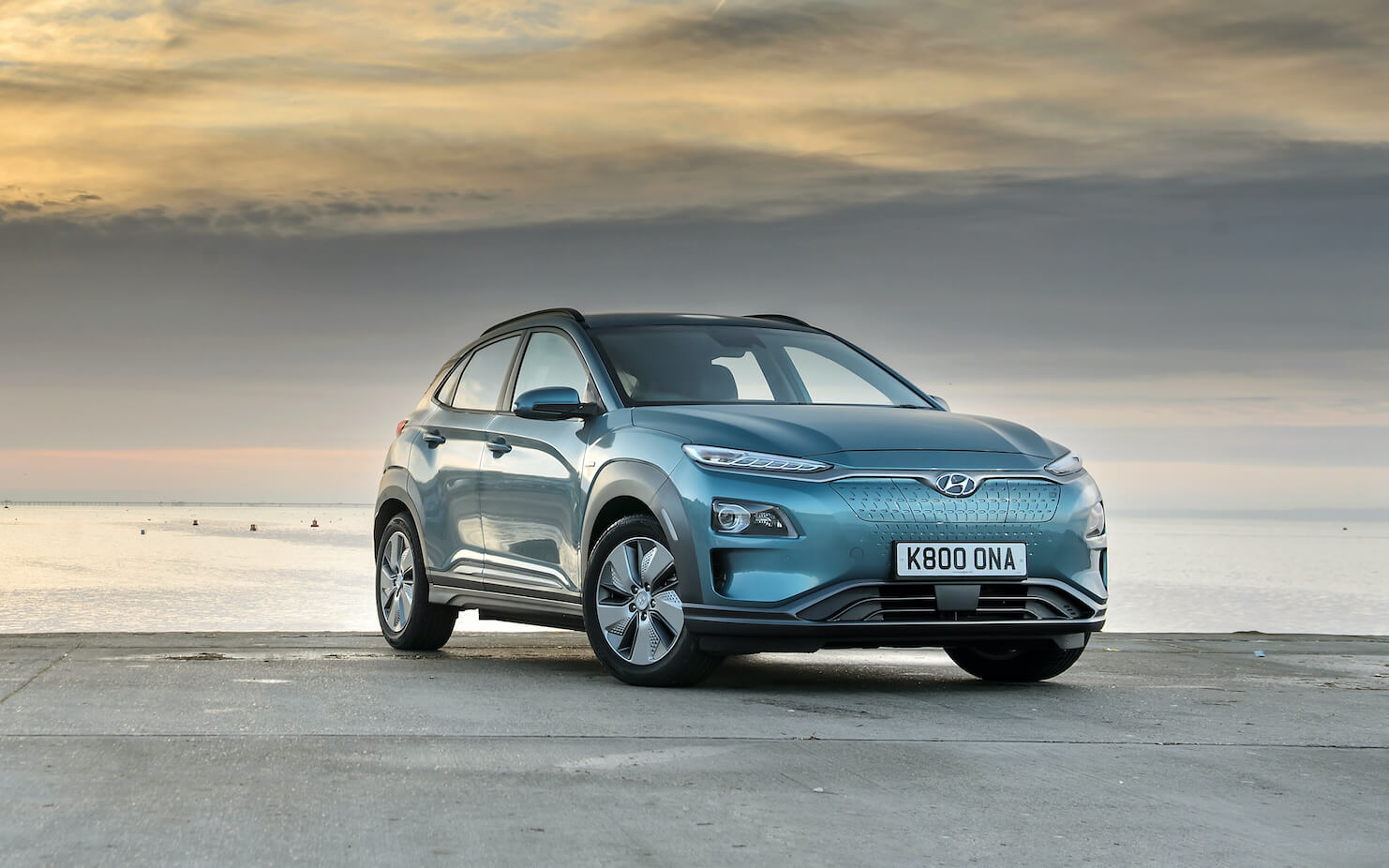
Summary
Can electric vehicles really be affordable and have a long electric range? The Hyundai Kona Electric shows they can. We get behind the wheel to see what this crossover is all about.
Pros
-
Long electric range
-
Funky looks
-
Punchy performance
Cons
-
Small boot
-
Interior could be better
-
Top-spec versions aren't cheap
Introduction
Hyundai is a manufacturer with an impressive range of hybrid, plug-in hybrid and EVs to choose from, and with more on the way.
But the car that really shows that this firm means business is the EV version of the funky Kona crossover – not least because of the long range offered on the top-spec electric version.
But does the Kona have more up its sleeve than just a generous range?
Latest model
Buyers were crying out for an affordable EV that could deliver a 250-mile range between charges, and the Kona Electric was that car. The model quickly scooped a number of high-profile awards – not least Which?'s Product of the Year title – leading to vast demand, which Hyundai just couldn't serve.
So a big change for the 2021 Kona Electric is fresh availability, with production in Europe as well as South Korea.
Plus, while it looks almost identical to its predecessor, the updated Kona Electric now features a larger 10.25-inch media system, along with the introduction of Bluelink connectivity services.
Driving feel
The really impressive thing about the Kona – especially the 64kWh battery version – is just how quick it is. With instant torque from the electric motor, it can set off at a phenomenal rate, even spinning the wheels if you're not careful.
But aside from its zippy nature, it's not the most fun car on sale and is really best used as a relaxed cruiser. The only slight gripe is the firm ride, due to Hyundai stiffening the car up to cope with the extra weight of the batteries.
Looks and image
Ever since the petrol Kona debuted in 2017, the prospect of a bold-looking crossover has divided opinion. The Electric version will likely prove decisive, and its stacked headlight design and chunky plastic cladding make it stand out from the crowd.
The Electric model also differs from the regular Kona with its textured 17-inch alloy wheels, the dimpled closed-off front grille that houses the charging port, and the revised bumpers. The bold colour palette won't go unnoticed either.
If you'd prefer something that blends in a bit more, try the mechanically similar Kia e-Niro.
Space
Despite the Kona being the size of a family crossover, inside it more closely resembles a supermini than a family hatchback.
The boot measures 334 litres, similar to a Volkswagen Polo, increasing to 1,116 litres with the rear seats down. The cabin feels roomier, with enough rear seat space for adults to get comfortable. The lack of a transmission tunnel also frees up a lot of space, with a large storage box replacing the traditional centre console.
But if you want a roomier EV for a similar price, again the Kia e-Niro is worth looking at, or the Nissan Leaf, which has a much larger 435-litre boot.
Engine and running costs
Two battery powertrain options are available on the Kona Electric. The entry-level 134bhp electric motor with 39kWh battery gives 0–60mph in 9.5 seconds and a top speed of 96mph. It also has a claimed range of 189 miles, which should be plenty for most drivers.
If you want to travel further between charges, you should choose the more powerful 64kWh battery version, which produces 201bhp. Its 278-mile range is one of the longest of any electric car, regardless of price. Add to that a 0–60mph sprint time of just 7.7 seconds and a top speed of 104mph.
While you pay more for a Kona Electric, the running costs will be minimal. You don't pay vehicle tax, and access to a congestion charge zone is usually free for an electric car. This alone will save you quite a sum if you live or regularly drive in a zone.
The fuel cost per mile is also fractional compared to a traditional petrol or diesel vehicle, especially if you can charge the car at home.
Powertrains
-
39kWh battery with 134bhp electric motor
-
64kWh battery with 201bhp electric motor
Trims explained
Three specifications are available on the Kona Electric: SE, Premium and Premium SE. Equipment highlights and pricing are as follows.
SE
-
17-inch alloy wheels
-
Leather steering wheel
-
Climate control
-
Automatic lights
-
LED daytime running lights
-
Electrically adjustable and heated mirrors
-
Adaptive cruise control
-
Rear parking sensors
-
Reversing camera
-
Keyless entry and start
-
7-inch touchscreen
-
Apple CarPlay and Android Auto
-
Lane keep assist
-
Autonomous emergency braking
-
Emergency call system
-
Auto-dimming rear-view mirror
-
Automatic wipers
-
Privacy glass
-
Rear LED lights
-
Electrically folding door mirrors
-
Front parking sensors
-
10.25-inch touchscreen
-
Satellite navigation
-
Krell sound system
-
Wireless charging
-
Blind spot monitoring
-
Rear cross traffic alert
-
Lane follow assist
Premium SE
-
Large battery pack
-
Electric front seats
-
Heated and ventilated front seats
-
Heated rear seats
-
Leather upholstery
-
High beam assist
-
LED headlights
-
Heated steering wheel
-
Head-up display
The Hyundai Kona Electric is now available in the Smart Lease range for a limited time. Find out more about leasing a Hyundai Kona Electric.
